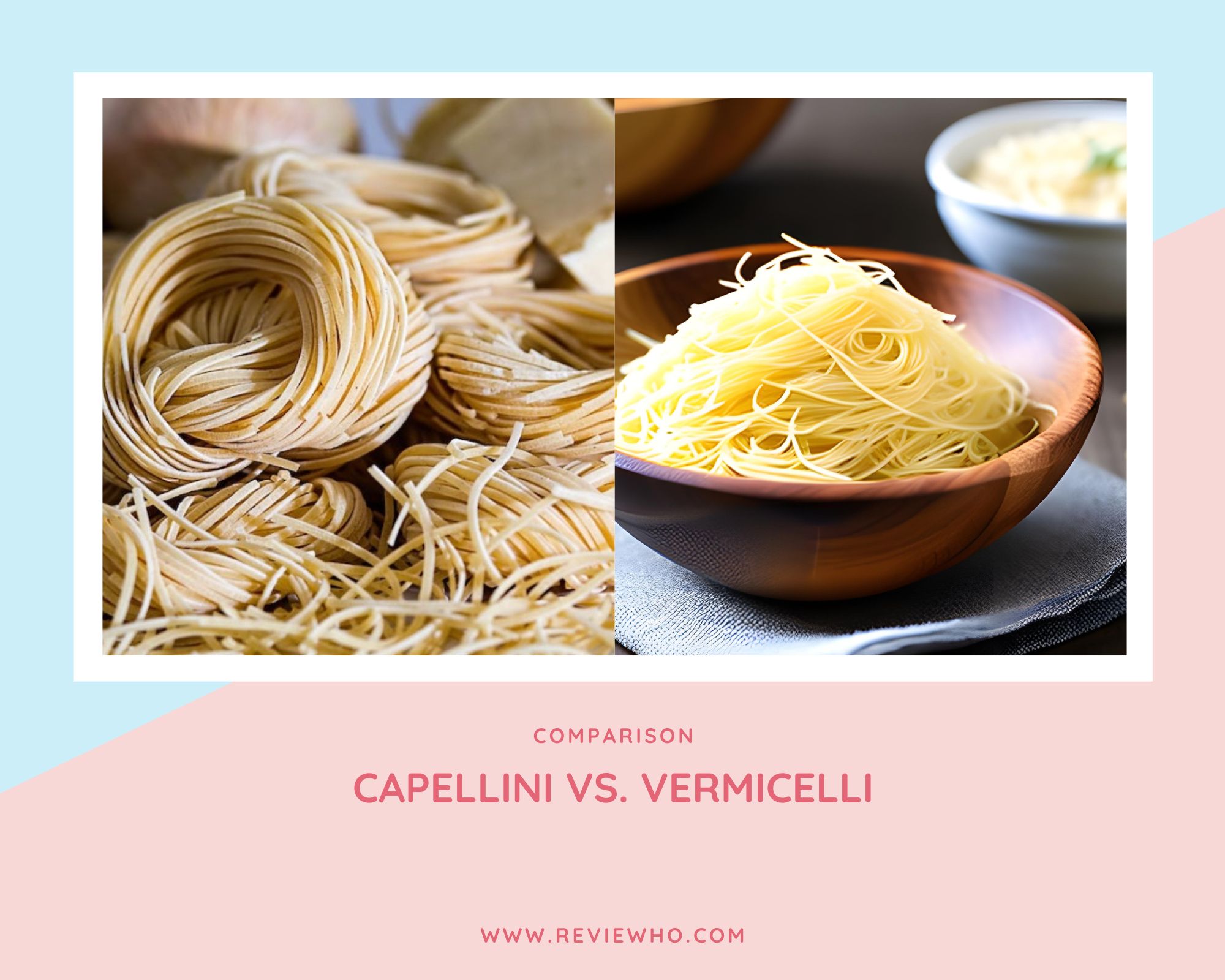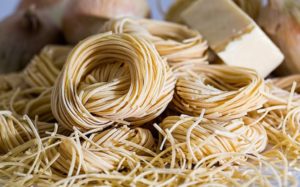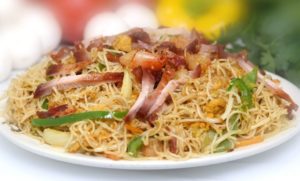Most people think that every type of thin pasta is vermicelli. But that is not always the case. Truth is, there is a variety of pasta, each with a different thickness. Capellini and Vermicelli are among the most popular types of pasta you will find.
But is vermicelli the same as capellini? These are two unique types of pasta that are used in different types of cuisines. You can find these in Asian and other Asian-American recipes.
In our post today, we have a detailed capellini vs. vermicelli contrast. We aim to figure out just how much these two amazing noodles are from each other. Let’s get to it.
About Capellini
Origins and Characteristics
Capellini, also known as “angel hair pasta,” originates from Italy, specifically the Campania region. It is renowned for its delicate and fine texture, resembling the threads of a spider’s web. Capellini is made from durum wheat flour, which gives it a light and airy quality.
Compared to the regular types of noodles, capellini is thinner. It features a diameter of around 0.03 inches.
Culinary Applications
Due to its thinness, Capellini cooks quickly, usually within 2-3 minutes. It pairs perfectly with light and delicate sauces, allowing the pasta to shine without overpowering the flavors. Classic combinations include fresh herbs, olive oil, garlic, and lemon zest. Additionally, Capellini is commonly used in soups and broths, adding a subtle touch of elegance to the dish.
Expert Tip: Handling Capellini
To ensure the best results when cooking Capellini, remember to:
- Use an ample amount of salted boiling water to prevent the pasta from sticking together.
- Stir gently while cooking to avoid clumping.
- Drain immediately after reaching al dente to prevent overcooking.
Vermicelli
Origins and Characteristics
Vermicelli, a pasta variety derived from the Italian word for “little worms,” possesses a slender and delicate form. It originated in Italy and gained popularity across various cuisines worldwide. Vermicelli is traditionally made from semolina or wheat flour, which contributes to its slightly more substantial texture compared to Capellini.
This widely used pasta can be found in most Italian dishes, as well as a range of Asian dishes.
Culinary Applications
Vermicelli offers versatility in its applications and pairs well with a range of sauces. It serves as an excellent foundation for both light and hearty dishes, making it a favorite in pasta salads, stir-fries, and traditional Italian recipes. Its thinness allows it to absorb flavors while maintaining its own unique character.
Expert Tip: Cooking Vermicelli to Perfection
To achieve the best results when cooking Vermicelli, follow these guidelines:
- Use a large pot with plenty of boiling water to ensure even cooking.
- Stir occasionally during the cooking process to prevent sticking.
- Test for doneness by tasting a strand; it should be tender yet firm (al dente).
- Rinse the cooked pasta with cold water to stop the cooking process and remove excess starch.
The Difference
While Capellini and Vermicelli may appear similar, several differentiating factors set them apart:
- Thickness: Capellini is thinner than Vermicelli, resembling angel hair or fine threads, while Vermicelli has a slightly more substantial and cylindrical shape.
- Cooking Time: Capellini cooks much faster than Vermicelli due to its delicate texture, typically requiring only 2-3 minutes compared to Vermicelli’s 7-8 minutes.
- Culinary Combinations: Capellini is commonly paired with light, delicate sauces, whereas Vermicelli holds up well with both light and hearty sauces, offering a broader range of culinary possibilities.
You will also realize that there is a gluten-free vermicelli, whereas capellini is not mostly gluten-free. At the same time, vermicelli will need a thick sauce, while you can use capellini with a light sauce and seafood too.
So, if what you need is a light pasta dish, then capellini might just be what you need.
Can you Substitute Capellini for Vermicelli?
To be honest, since these two have a wide thickness variation, they can work as alternatives to each other in a range of recipes. What you need to know is what you need from the pasta you are purchasing and its effects on a recipe.
You might be able to use vermicelli in a cold salad, but capellini might not work because of the delicate texture and the thinness. If you cool capellini, there is a chance that it will clump up, which is not something you want for your meal.
When the vermicelli is around 0.04 inches, it will work well in replacing capellini (angel hair).
Also, read:
Conclusion
As we conclude our exploration of the fine threads of pasta, it becomes evident that Capellini and Vermicelli each possess their own unique qualities. Capellini enchants with its delicate and light nature, perfect for showcasing subtle flavors, while Vermicelli captivates with its slender form, offering versatility in various culinary creations. Whether you’re in the mood for an elegant and refined dish or a heartier pasta creation, understanding the distinctions between Capellini and Vermicelli will empower you to make the perfect choice for your next culinary adventure.
Remember, the world of pasta is vast and delightful, with numerous varieties waiting to be discovered. So, embrace your inner chef, experiment with different flavors, and embark on a gastronomic journey filled with tantalizing pasta dishes!






